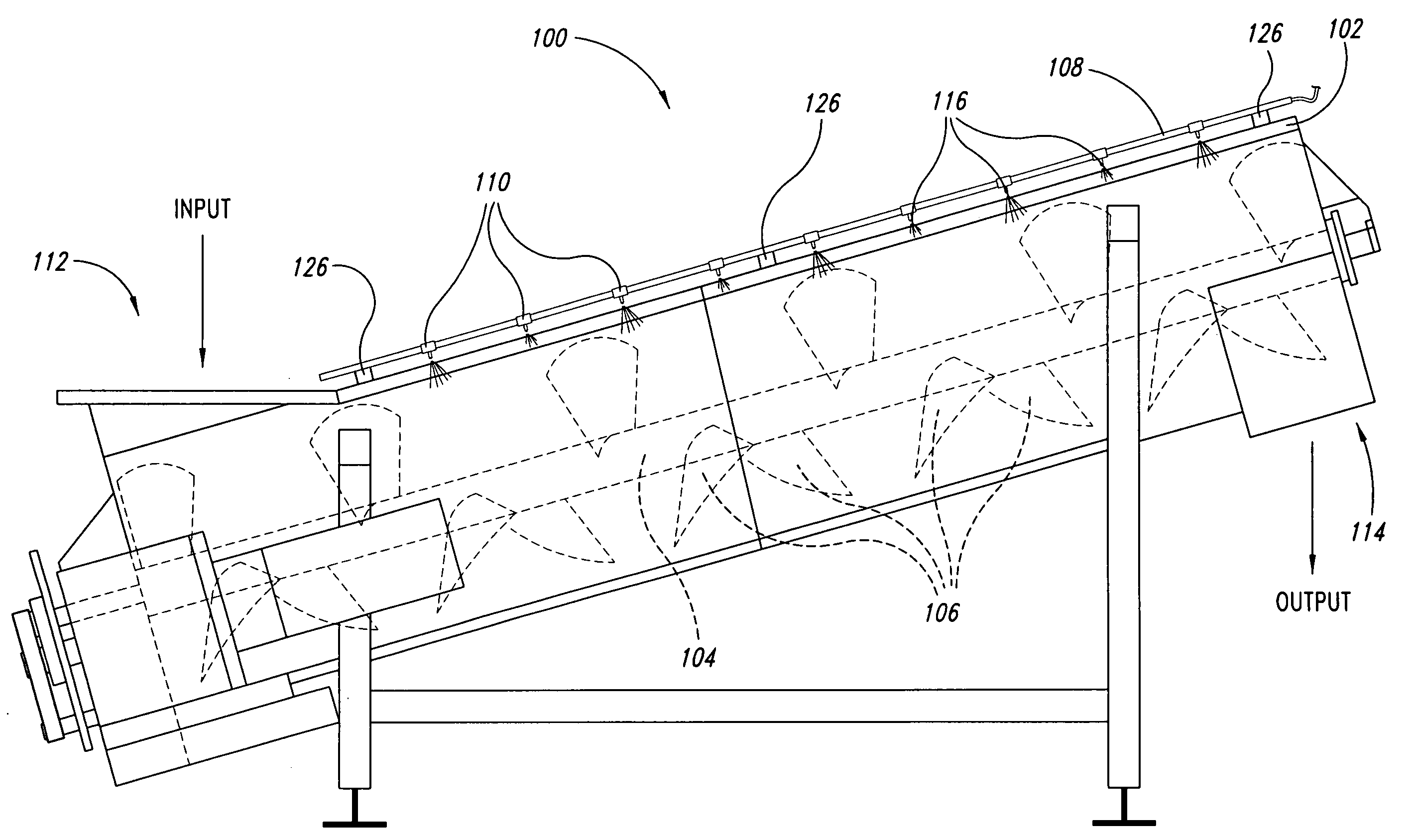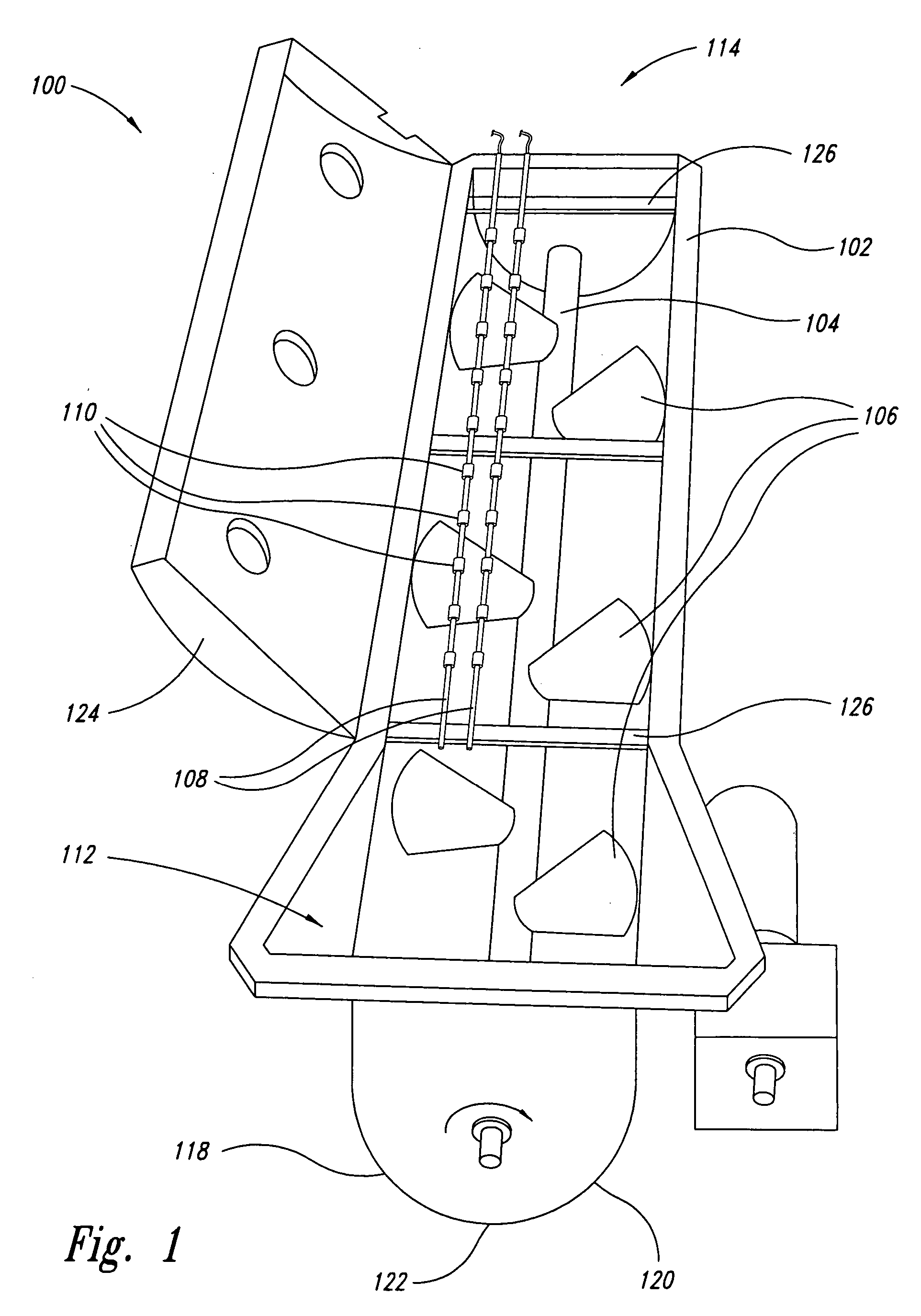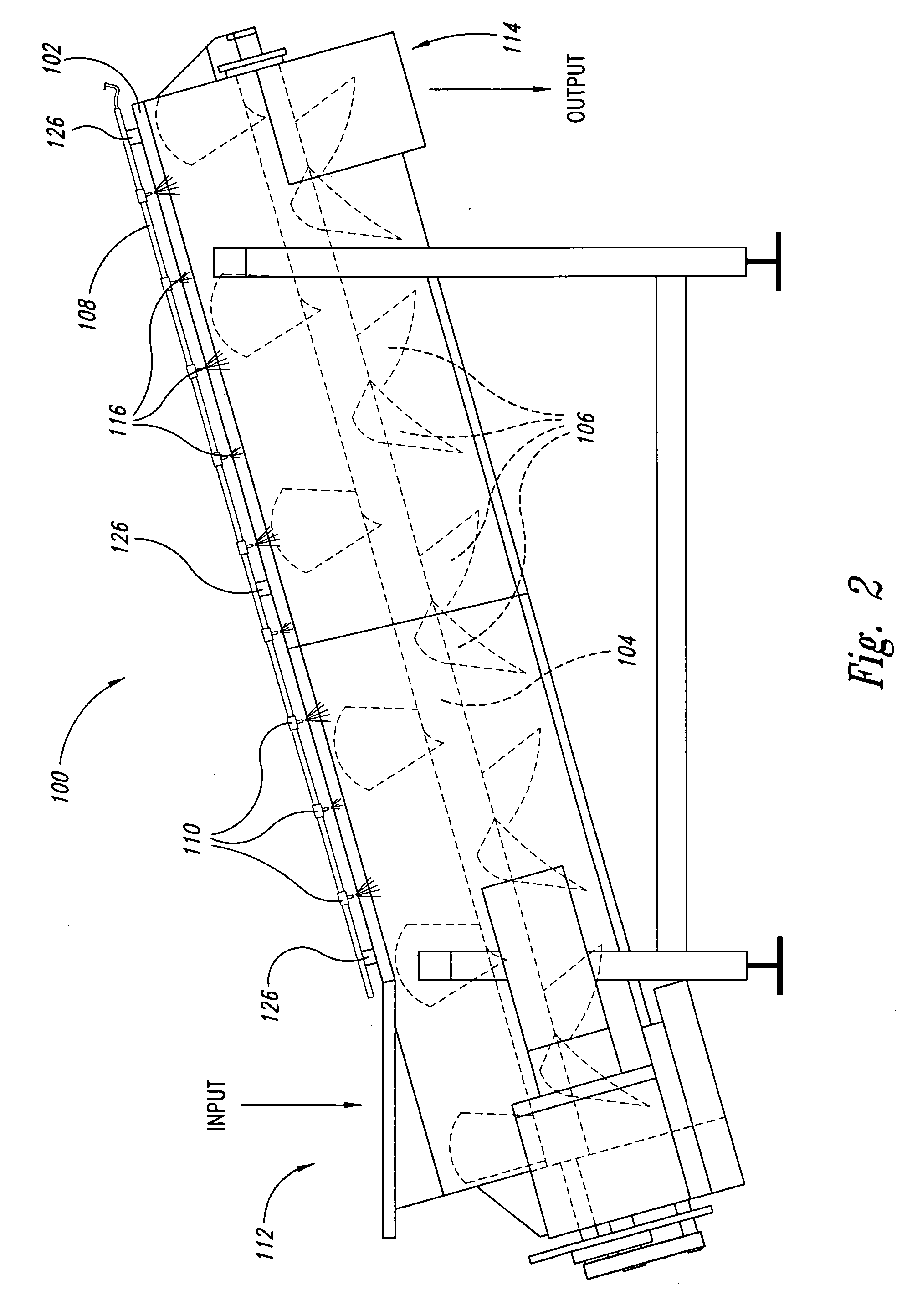Treatment fluid application apparatus for foodstuffs and methods related thereto
a technology of foodtuffs and fluids, applied in the field of foodtuff treatment, can solve the problems of affecting the appearance, taste, smell, etc., and affecting the edibility, longevity, so as to improve the edibility and/or appearance of the treated foodstuffs.
- Summary
- Abstract
- Description
- Claims
- Application Information
AI Technical Summary
Benefits of technology
Problems solved by technology
Method used
Image
Examples
example 1
Uninoculated Meat Parts Treated Using Shaft 1
[0063] This example illustrates the effectiveness of using an apparatus of this invention, with Shaft 1 installed, to treat naturally-occurring bacteria attached to the surface of meat parts. The meat parts treated were 90 / 10's. Bacterial populations were measured before and after treatment. Log10 reductions of the bacteria counts were determined as a function of the quantity of SANOVA® disinfectant used per pound of meat parts treated. Tests were conducted for meat part feed rates of 6,000 pounds per hour, with meat part dwell times of 5, 10, and 15 seconds; and 20,000 pounds per hour, with meat part dwell times of 5 and 15 seconds. The results are shown in FIG. 8 as plots of log10 reduction of bacteria vs. quantity of disinfectant used.
example 2
Inoculated Meat Parts Treated Using Shaft 1
[0064] This example illustrates the effectiveness of using an apparatus of this invention, with Shaft 1 installed, to treat E. coli artificially attached to the surface of meat parts via inoculation. The meat parts treated were 90 / 10's. Bacterial populations were measured before and after treatment. Log10 reductions of the bacteria counts were determined as a function of the quantity of SANOVA® disinfectant used per pound of meat parts treated. Tests were conducted for meat part feed rates of 6,000 pounds per hour, with meat part dwell times of 5, 10, and 15 seconds; and 20,000 pounds per hour, with meat part dwell times of 5, 10, and 15 seconds. The results are shown in FIG. 9 as plots of log10 reductions of bacteria vs. quantity of disinfectant used.
example 3
Uninoculated Meat Parts Treated Using Shaft 2
[0065] This example illustrates the effectiveness of using an apparatus of this invention, with Shaft 2 installed, to treat naturally-occurring bacteria attached to the surface of meat parts. The meat parts treated were 90 / 10's and 50 / 50's. Bacterial populations were measured before and after treatment. Log10 reductions of the bacteria counts were determined as a function of the quantity of SANOVA® disinfectant used per pound of meat parts treated. Tests were conducted for meat part feed rates of 6,000 pounds per hour, with a meat part dwell time of 15 seconds, for 50 / 50's; 6,000 pounds per hour with a meat part dwell time of 15 seconds for 90 / 10's; and 20,000 pounds per hour with a meat part dwell time of 5 seconds, for 90 / 10's. The results are shown in FIG. 10 as plots of log10 reductions of bacteria vs. quantity of disinfectant used.
PUM
 Login to View More
Login to View More Abstract
Description
Claims
Application Information
 Login to View More
Login to View More - R&D
- Intellectual Property
- Life Sciences
- Materials
- Tech Scout
- Unparalleled Data Quality
- Higher Quality Content
- 60% Fewer Hallucinations
Browse by: Latest US Patents, China's latest patents, Technical Efficacy Thesaurus, Application Domain, Technology Topic, Popular Technical Reports.
© 2025 PatSnap. All rights reserved.Legal|Privacy policy|Modern Slavery Act Transparency Statement|Sitemap|About US| Contact US: help@patsnap.com



